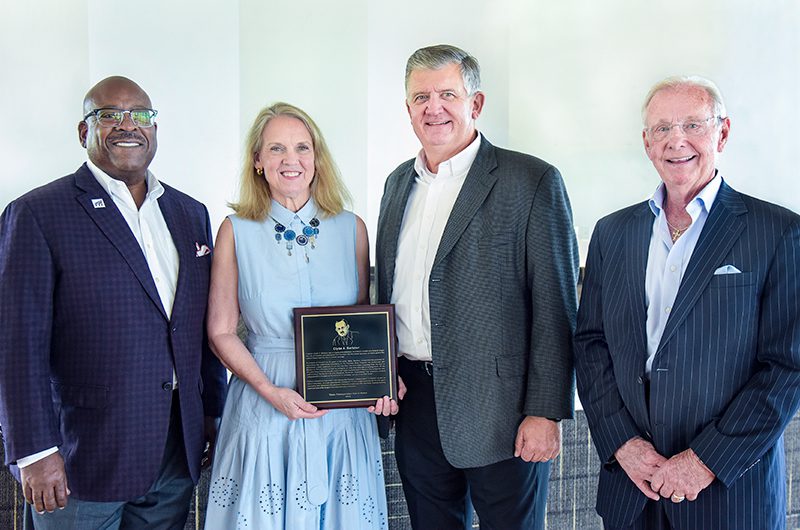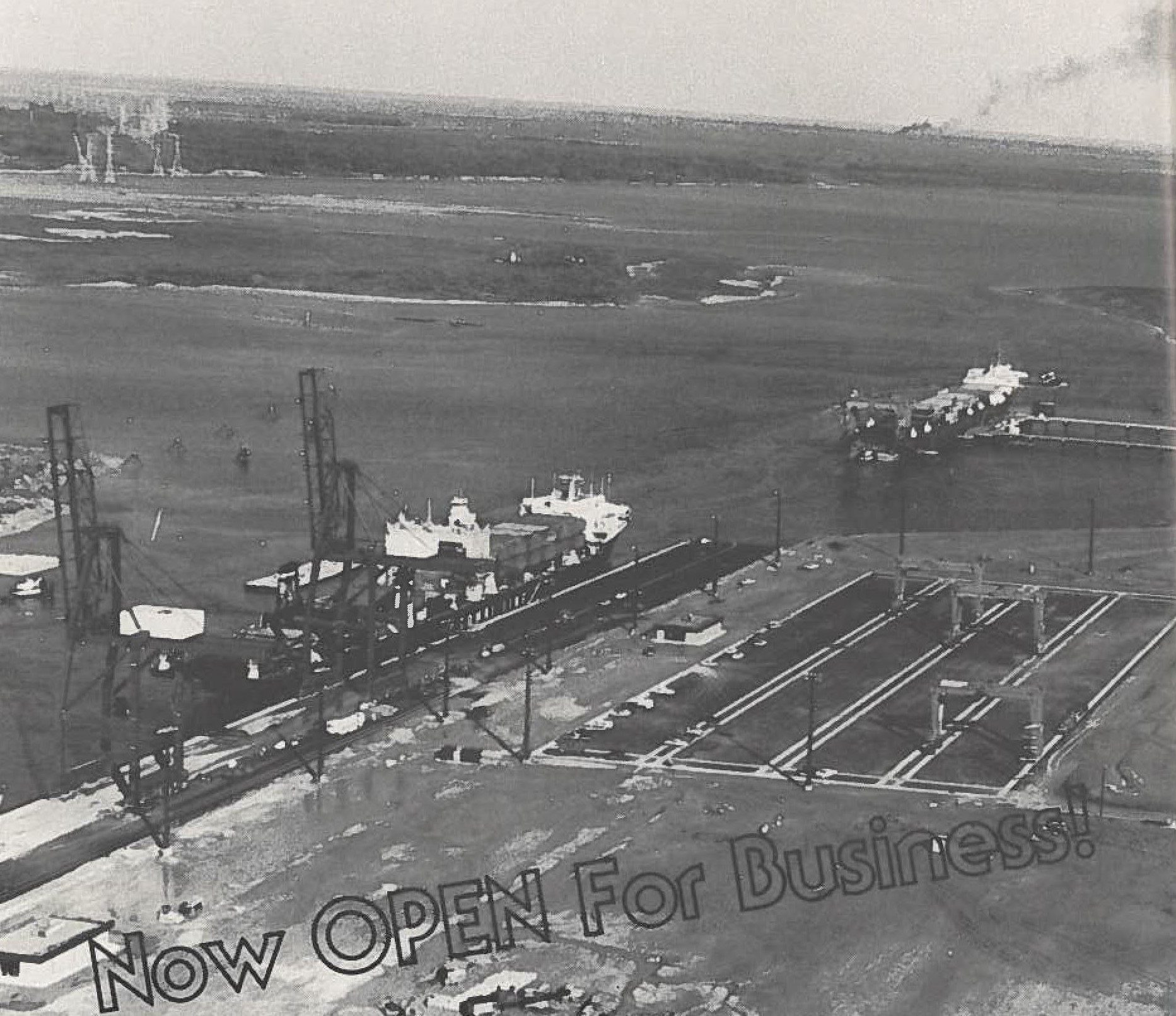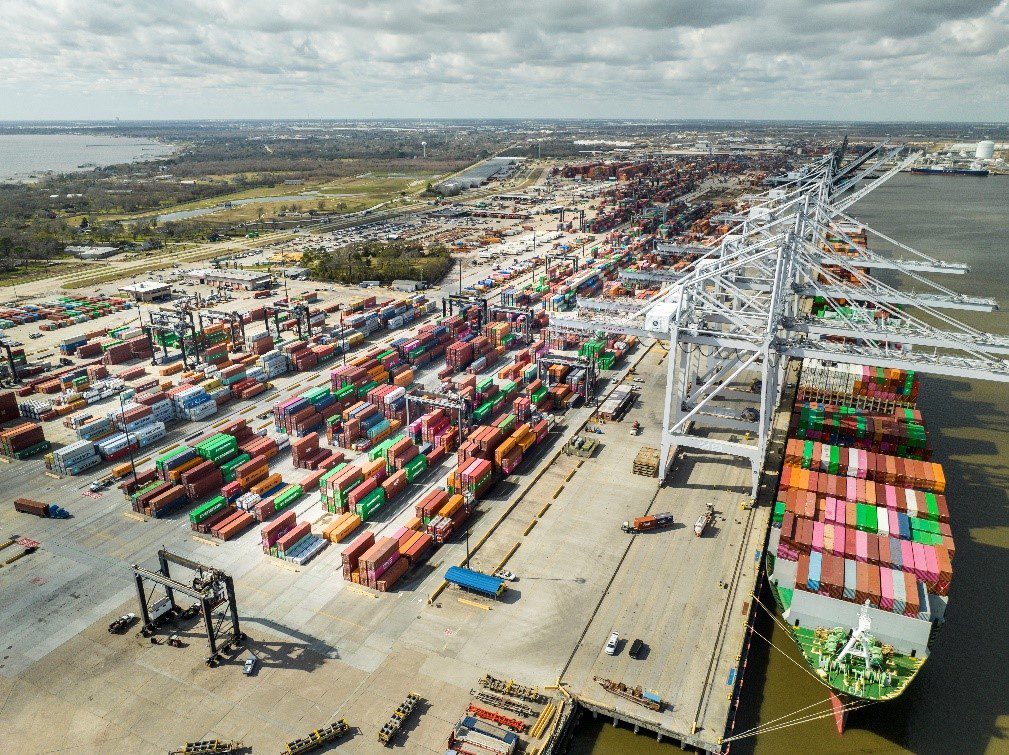Do you know where the name “Barbours Cut” came from? It was named after the great Captain Clyde A. Barbour who had the foresight to recognize the potential for expanding waterborne commerce within the Houston Ship Channel and help establish a turning point in the supply chain industry for Port Houston.
 Left to Right: Texas A&M Transportation Institute Agency Director Greg Winfree; Nancy Potter; Port Houston Executive Director Roger Guenther; and Port Houston Commissioner Clyde Fitzgerald honoring the late Captain Clyde A. Barbour for his induction into the Texas Transportation Hall of Honor.
Left to Right: Texas A&M Transportation Institute Agency Director Greg Winfree; Nancy Potter; Port Houston Executive Director Roger Guenther; and Port Houston Commissioner Clyde Fitzgerald honoring the late Captain Clyde A. Barbour for his induction into the Texas Transportation Hall of Honor.
An event was held at the Sylvan Beach Pavilion in LaPorte, TX, by the Texas Transportation Hall of Honor in June to commemorate the late Captain Clyde A. Barbour. The event was organized to honor his pioneering contributions that led to the development of the Barbours Cut Container Terminal here at Port Houston, which was named after him. Captain Barbour's family, including his great-granddaughter Nancy Potter, attended the event, and after the induction, they were given a tour of the terminal. The tour provided them with a firsthand experience of just how Port Houston plays an essential role in the lives of many and contributes significantly to the growing economy of the region.
Captain Clyde A. Barbour's Great-Granddaughter Nancy Potter standing on a wharf at the present day Port Houston Barbours Cut Container Terminal.
Nancy Potter, says, “Through all the research I did learning about my great-grandfather, I have come to understand the immense struggles he faced throughout his life, the obstacles that seemed insurmountable, and the resilience that carried him forward. As I reflect on his legacy, I cannot help but be inspired by the lessons I learned from him. He instilled in me the belief that no dream is too big and no goal is out of reach. His story serves as a constant reminder that success is not defined by the circumstances we are born into, but rather by the passion, dedication, and resilience we bring to our pursuits.”
As a young man, Captain Barbour had the bold idea to dredge an inlet and build a terminal to shorten the trip up the Houston Ship Channel helping make Port Houston what it is today. Barbours Cut, which is the longest-standing container terminal at Port Houston, has been in operation for more than 45 years. The terminal currently offers 300 acres of container yard space, six berths, 29 entry truck gates, and more than 8,000 feet of working track that connects to off-site warehouses.

Barbours Cut Container Terminal first opened for business in January 1977.
Our dedication to maintaining Captain Barbour's legacy means that we are constantly looking for ways to improve and be innovative. Over the next five years, Port Houston plans to invest more than $650 million in capital improvements at Barbours Cut to modernize the facility and optimize capacity. This includes building container yard space, rehabilitating concrete, and adding more STS cranes to enhance our terminal fleet.
Barbours Cut Container Terminal operating in 2023.
Port Houston also operates Bayport Container Terminal, and collectively these terminals handled nearly 4 million TEUs in 2022, making Port Houston the fastest-growing container port in the U.S., and the fifth-largest container port in the country.


